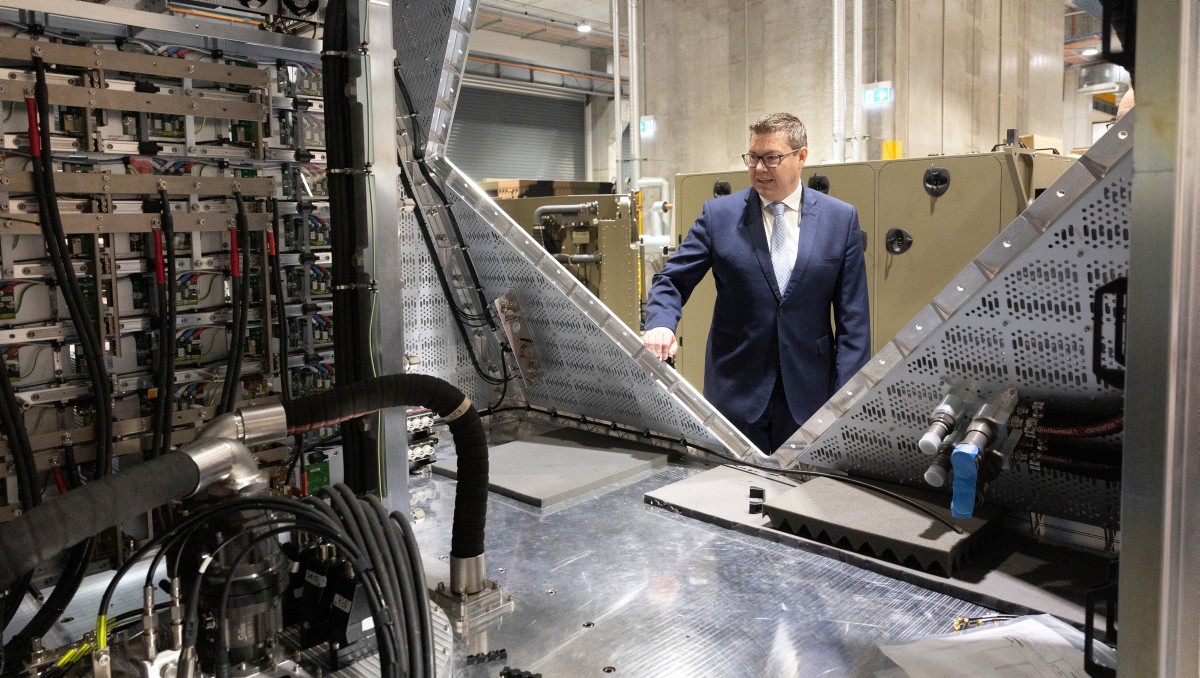The Robotic Revolution
Better Innovation as a Catalyst for ‘Accelerated Preparedness’ through RAS
Introduction
The ever-evolving landscape of national security and the constant shift in strategic priorities demand that armies adapt swiftly and efficiently. As outlined in the 2023 Defence Strategic Review (DSR), the Australian Army is called upon to enhance its warfighting capability and self-reliance and optimise for littoral operations. Army is now part of a Joint Integrated Force with a focussed mission; achieving denial by deterrence in the littorals of Australia’s immediate region. Army’s enhancement is to be achieved through the concept of 'accelerated preparedness,' a multifaceted approach that involves reimagining how autonomy and robotic systems can be effectively employed in addressing domestic emergencies and the defence of Australia. This Land Power Forum post considers the possibilities presented by autonomy and robotics and how they can reduce the burden on the organisation and increase the effectiveness and preparedness of land forces. It argues that much will need to change to seize this opportunity.
Economies of Scale Provided by Automated Solutions
The employment of robotic and autonomous systems (RAS) offers an opportunity to achieve economies of scale in various military operations. In domestic emergencies, such as disaster response, autonomous drones and ground-based robots can be deployed to rapidly assess damage, deliver aid, and conduct search and rescue operations. A major benefit is the provision of persistent situational awareness and early warning through the deployment of sensor systems on uncrewed systems. This particular capability has a dual purpose; persistent situational awareness and targeting will be essential to enable Army long-range fires, a key priority specifically called out in the DSR, and relatedly enable a degree of ‘deterrence by detection’. RAS can provide 24/7 rotational coverage (allowing for downtime required for charging), significantly improving both response times, increasing persistence and expanding the spatial envelope of observation. In domestic emergencies and disaster response tasks, autonomous surveillance drones can continuously monitor vast areas, providing real-time intelligence, and robotic vehicles can help secure borders and enable civilian population evacuations, reducing the need for human presence in remote and hazardous locations.
Army needs to conceptualise RAS as the cheap, plentiful and expendable platforms that can complement Army’s small fleets of armoured and protected vehicles and relatively small personnel numbers, made even smaller year-on-year by Army’s separation rate of 13.2%, the worst of any service by a long way, reported in the Department of Defence Annual Report 2021-22. Army must start to see the benefit of scale, the power of the swarm and the advantage of saturation. Army must develop a capability to achieve overwhelming saturation of the battlespace with multi-domain RAS-mounted sensors. Specifically related to preparedness, when escalation occurs, the first rung on the ladder of escalation should be the deployment of long-range multi-domain RAS equipped with non-lethal sensory and intelligence, surveillance and reconnaissance (ISR) capabilities to monitor operational areas of interest and to provide the warning time that has evaporated according to both the DSR and the Defence Strategic Update 2020. Army can contribute to this joint response by deploying into the littorals to Australia’s north and saturating the area with a combination of medium-range multi-domain RAS to form a sensory network that can be the ‘eyes and ears’ of a non-organic ‘kill web’ should further escalation occur.
The utilisation of automation not only increases efficiency but also reduces the human resources required for these operations, allowing the Australian Army to allocate its personnel to other critical tasks. This reassignment of human resources can enhance the overall readiness and preparedness of the Army.
Economies of Scale Through Integration
To fully harness the benefits of RAS, it is imperative to integrate these systems seamlessly into the Army's existing infrastructure. Integration ensures interoperability, data sharing, and a cohesive approach to military operations. The Australian Army can adopt a modular approach, allowing various autonomous systems to connect and work together, resulting in a force multiplier effect and the creation of ‘kill webs’ by the passing of targeting data from sensor to decider and effector. This passage of data must transcend service or domain stove pipes. An Army RAS should be able to effectively interface with a RAN surface combatant, RAAF Joint Strike Fighter or Army Apache. This implies standardisation of data, interoperability of C4ISR systems and high-speed, high-capacity connectivity, including in a denied or degraded environment.
For example, an integrated system of autonomous ground vehicles, seaborne surface and aerial drones can collaborate to establish a secure multi-domain perimeter for a forward-deployed littoral force. These vehicles can be equipped with surveillance sensors and communication devices, working in harmony to monitor and respond to potential threats. Such integration enhances situational awareness, reduces response time, and ensures a coordinated and effective layered defence.
Training Solutions to Expand the Land Force
Expanding the land force with RAS is a critical component of accelerated preparedness. RAS can aid in this expansion by facilitating the training of new personnel and augmenting the capabilities of existing forces. Soldiers should be training with, and even against, RAS. Simulated and synthetic training environments with autonomous opponents and support systems allow soldiers to hone their skills in a safe and controlled setting. Soldiers should also get comfortable deploying robots and autonomous systems to achieve tactical effects. This can already be seen to a small degree with the black hornet, but this needs to be scaled to soldiers being able to deploy and control swarms of drones with varying capabilities in support of both manoeuvre and logistical effects. This must be trained and regularly. Additionally, autonomous target systems can mimic real-world scenarios, enhancing marksmanship and tactical proficiency.
Incorporating robotics into logistics and support roles can also alleviate the need for additional personnel. Autonomous vehicles and drones can transport supplies, conduct maintenance tasks, and even assist with medical care, freeing up human resources for combat roles and mission-critical functions.
Equipping an Expanded Force
Equipping an expanded force involves getting RAS into the hands of every soldier and officer in Army. It means getting drones out to battalions and not keeping them in the Q-store, but letting soldiers use them, maybe even break them and getting them a bit dirty. The development and procurement of autonomous vehicles, robotic systems, and associated technologies are crucial in ensuring the success of accelerated preparedness.
Investment in research and development, coupled with real and agile collaboration with industry partners, can result in cutting-edge autonomous systems tailored to the specific needs of the Australian Army. Army needs to find industry partners, including ones in their infancy, and start making deals to develop intellectual property and productionise ideas. Things do not get real until you’re doing deals and Army needs to be driving these. Any attempt to link the innovation required to drive development of a real RAS capability with major procurement will end in failure, both embarrassing Defence and frustrating industry, not to mention annoying government, while wasting our most precious commodity, time. Innovative firms simply do not have the time to deal with the high bureaucratic overhead of dealing with Defence—staying solvent long enough to close a deal with Defence is a real challenge and one not grasped by many in Defence. This has resulted in the situation where Australian firms first look to market their innovative products outside of Australia with the pursuit of an Australian contract to occur afterwards. Additionally, international cooperation can be sought to pool resources and knowledge in the development of shared platforms and standards, reducing the overall cost and accelerating the deployment of these technologies and AUKUS Pillar II holds real promise in this respect.
Conclusion
In conclusion, the Australian Army's approach to accelerated preparedness through the employment of RAS offers a promising path forward. The potential for economies of scale, integration, expanded force, and equipping an expanded force is vast. These technologies not only enhance the Army's capabilities but also reduce the burden on the organisation and land forces. But to seize this huge opportunity, Army and Defence must change the way they innovate. The organisation can no longer afford for innovation, including the kind that will deliver new RAS capabilities, to be stifled by committee processes, the Australian Standard for Defence Contracting (ASDEFCON), risk aversion, domain or service stove pipes, bureaucracy and a lack of the freedom of manoeuvre for Army as a capability manager to make deals. Innovation should not be driven through the vessel of major capital acquisitions, procurement and the One Defence Capability System (which, as an aside, the DSR slammed as not being fit for purpose). If we want to achieve accelerated preparedness we must innovate better.
As the world faces evolving security challenges, the Australian Army must embrace the transformative potential of autonomy and robotics. Failure to do so will not only squander an opportunity, but may even make Army less relevant. By embracing RAS, Army can not only enhance its warfighting capability and self-reliance but also make a massive contribution to the joint integrated force, coalition partner forces and to Australian safety and security. The time to act is now, and the path to ‘accelerated preparedness’ lies in innovating better to optimise the synergy between human and machine.
This article is a submission to the Spring Series 2023 Short Writing Competition, 'Army’s approach to accelerated preparedness'.
The views expressed in this article and subsequent comments are those of the author(s) and do not necessarily reflect the official policy or position of the Australian Army, the Department of Defence or the Australian Government.
Using the Contribute page you can either submit an article in response to this or register/login to make comments.




